conjoined twins

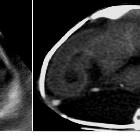
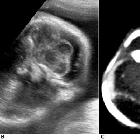
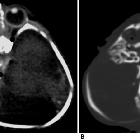

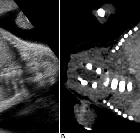
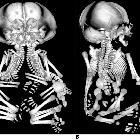
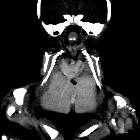
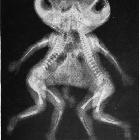




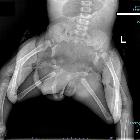
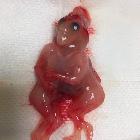
Conjoined twin pregnancy is a rare occurrence resulting from the failure of a zygote to separate completely after 13 days . This results in the twins being physically joined.
Epidemiology
The prevalence of conjoined twins ranges from 1:50,000 to 1:200,000. They are more common in parts of Southeast Asia and Africa with prevalence rates as high as 1:14,000 to 1:25,000. There is a recognized female predisposition (F: M of approximately 3:1).
Pathology
Embryology
Conjoined twins are monozygotic, monoamniotic, and monochorionic (MCMA) (see multifetal pregnancy) and result due to a failure of normal complete separation of the embryonic plate from an incomplete delayed division of the inner cell mass. This is thought to occur around 13-17 days of gestation.
Classification
Conjoined twins are classified according to the most prominent site of interconnection
Ventral union
- cephalopagus: face (rare)
- thoracopagus: thorax, commonest site (~70% )
- omphalopagus, xiphopagus: abdomen
- ischiopagus: pelvis ~5%
Dorsal union
- craniopagus: skull (rare)
- pygopagus: sacrum
- rachipagus: vertebral fusion above the sacrum
Lateral union
If more than one area is connected the terms are combined, e.g. thoraco-omphalopagus (thoracic and abdominal fusion).
Other descriptive terms include:
- diprosopus: two faces with one head and body
- dicephalus: two heads with one body
- syncephalus: facial fusion with or without thoracic fusion
Associations
There is a higher incidence of congenital malformations in conjoined twins (10-20%) which are unrelated to the point of fusion such include
Radiographic assessment
Antenatal ultrasound
Thus identification of a dividing membrane or two placentas excludes the diagnosis. Definitive sonographic features will depend on the type of fusion.
General features include:
- lack of a separating inter-twin membrane
- non-separable skin contours with an inability to separate the fetal bodies
- detection of other anomalies in a twin gestation
- solitary umbilical cord with more than 3 vessels present
- both fetal heads persistently at the same level
- backward flexion of the cervical spine (due to the fact that most conjoined twins are fused ventrally and face each other
- bibreech or less commonly, bicephalic presentation
- constant relative fetal positions
Treatment and prognosis
The prognosis for conjoined twins, in general, is quite poor. Approximately 40-60% of conjoined twins are stillborn and almost 35% of live births do not survive beyond 24 hours. Of those who do survive, surgical separation is sometimes possible (but with higher failure rates if performed within the first 3 weeks ). Surgical separation, in general, is in most cases very challenging with high mortality, depending on the complexity of shared structures. Of those with thoracopagus, ~75% have extensively joined hearts which in turn preclude a successful separation.
Siehe auch:
- Polyhydramnion
- Anenzephalie
- Zwillingsschwangerschaft
- inter twin membrane
- Mehrlingsschwangerschaft
- monozygotic
- MCMA
und weiter:

 Assoziationen und Differentialdiagnosen zu Siamesische Zwillinge:
Assoziationen und Differentialdiagnosen zu Siamesische Zwillinge:


